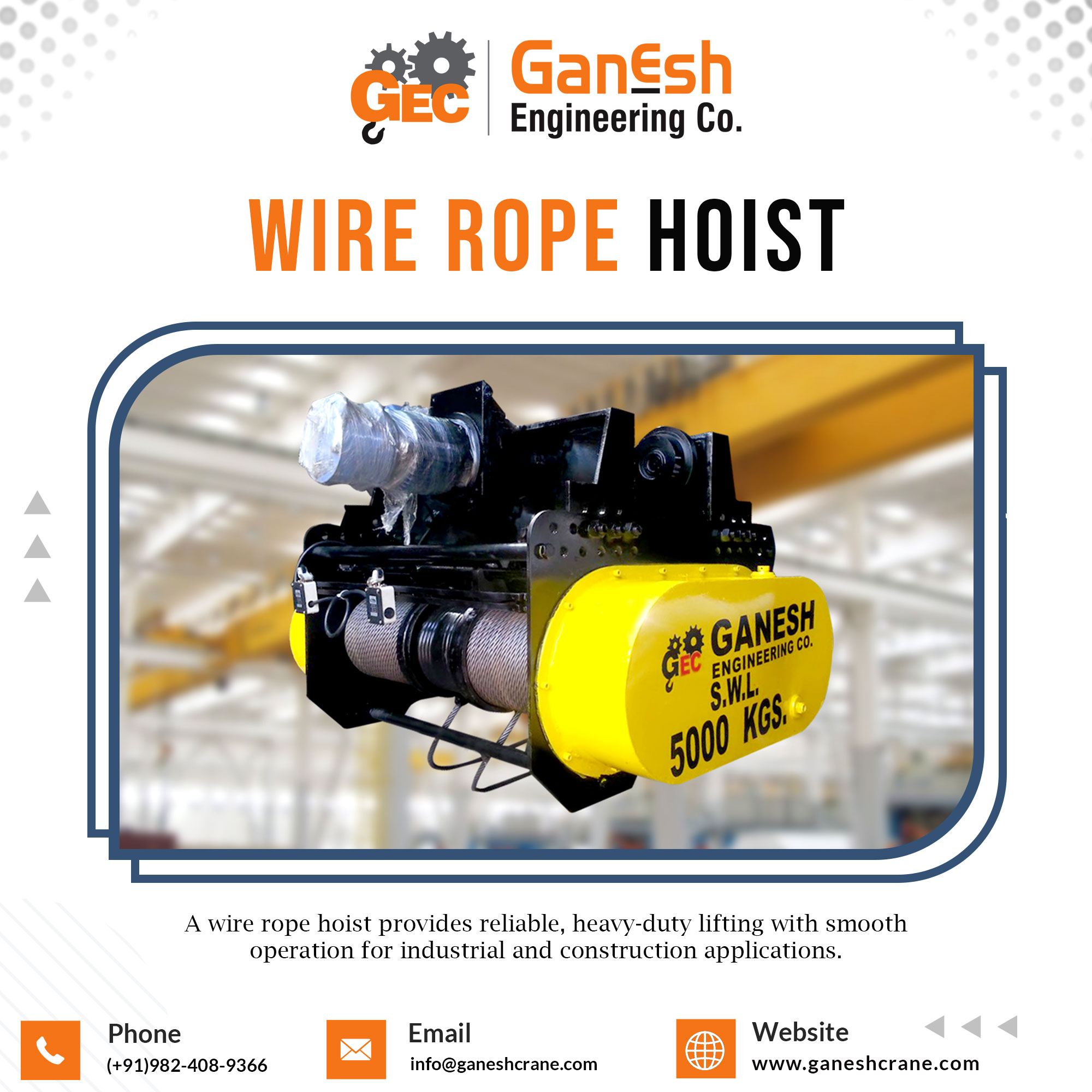An Overview of Wire Rope Hoists and Other Standard Lifting Hoists

Strong 8k brings an ultra-HD IPTV experience to your living room and your pocket.
Wire rope hoists and standard lifting hoists are two common types of machinery used for this purpose. They are designed to lift and move heavy loads safely, streamlining various processes and enhancing productivity. In this article, we'll delve into the features, applications, and advantages of these rope hoists and standard lifting hoists.
Wire Rope Hoists:
These hoists are a type of lifting equipment that utilizes a system of wire ropes wound around a drum to lift and lower loads. They are versatile and widely used across different industries due to their high lifting capacities and robust construction. Here's a closer look at some key features:
Lifting Capacity: These hoists are capable of handling heavy loads, typically ranging from a few hundred kilograms to several tons. This makes them suitable for lifting a wide variety of materials and equipment.
Durability: Constructed with high-quality materials such as steel, wire rope hoists are built to withstand rigorous use in demanding environments. They are designed for long-term reliability and minimal maintenance requirements.
Versatility: These rope hoists come in various configurations, including single and double girder designs, as well as different lifting speeds and power options. This versatility allows them to be tailored to specific lifting requirements.
Safety Features: Modern wire rope hoists are equipped with advanced safety features such as overload protection, emergency braking systems, and limit switches to prevent overtravel and ensure safe operation.
Applications: These rope hoists find applications in a wide range of industries, including construction, mining, manufacturing, and warehousing. They are used for tasks such as loading and unloading materials, positioning heavy machinery, and assembly line operations.
Standard Lifting Hoists:
Standard lifting hoists encompass a broader category of lifting equipment that includes chain hoists, lever hoists, and electric hoists. While they differ in design and operation, they share the common goal of lifting and moving heavy loads efficiently. Here are some notable features:
Variety of Designs: Standard lifting hoists are available in various designs to suit different lifting requirements. Chain hoists utilize a chain mechanism for lifting, while lever hoists utilize a lever and ratchet mechanism. Electric hoists, on the other hand, are powered by electricity for smooth and precise lifting.
Portability: Chain hoists and lever hoists are lightweight and compact, making them highly portable and suitable for use in confined spaces or remote locations where electricity may not be readily available.
Ease of Use: Standard lifting hoists are designed for ease of operation, with ergonomic handles and controls for effortless lifting and lowering of loads. They require minimal training for operators to use effectively.
Safety Features: Like wire rope hoists, standard lifting hoists are equipped with safety features such as overload protection and brake mechanisms to prevent accidents and ensure operator safety.
Applications: Standard lifting hoists are used in a wide range of industries and applications, including construction, maintenance, rigging, and transportation. They are ideal for tasks such as lifting heavy machinery, positioning equipment, and erecting structures.
Conclusion:
Wire rope hoists and standard lifting hoists are essential tools for various lifting applications across industries. While wire rope hoists offer high lifting capacities and durability, standard lifting hoists provide versatility and portability. Understanding the features and applications of these hoists is crucial for selecting the right equipment to optimize efficiency and safety in lifting operations. Whether it's lifting heavy loads on a construction site or moving equipment in a manufacturing facility, having the right hoist can make all the difference in streamlining processes and maximizing productivity.
Note: IndiBlogHub features both user-submitted and editorial content. We do not verify third-party contributions. Read our Disclaimer and Privacy Policyfor details.


